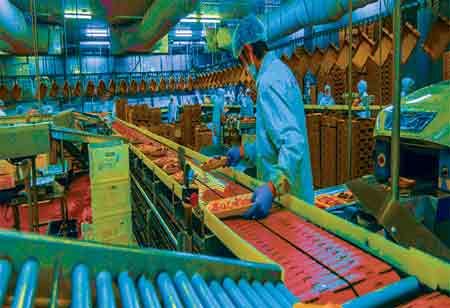Thank you for Subscribing to Food Business Review Weekly Brief
- Home
- Topics
- Alternative Proteins and Plant Based Food
- Beer and Wine
- Canned Beverages
- Coffee And Tea
- Food and Beverage Consulting
- Food and Beverage Financial Service
- Food And Beverages Marketing
- Food Distributors
- Food Ingredients
- Food Sustainability
- Plant Based Food and Beverages
- Seafood Suppliers
- Supplement Manufacturing
- Wine Investment
- News
- Vendor Viewpoint
- CXO Insights
- Conferences
- Newsletter
- CXO Awards
-
Innovative Strategies in Food Service Design
The commercial real estate lending landscape is driven by evolving market dynamics, regulatory shifts, and economic uncertainties.

By
Food Business Review | Wednesday, July 31, 2024
Stay ahead of the industry with exclusive feature stories on the top companies, expert insights and the latest news delivered straight to your inbox. Subscribe today.

Food service and design advancements reshape dining into a personalized, sustainable, and tech-driven experience.
FREMONT, CA: In recent years, the food service and design sector has undergone transformative changes, reshaping the landscape of dining and culinary experiences across the globe. Innovations are not limited to the kitchen but extend to how restaurants engage with customers, optimize operations, and create memorable experiences.
Here are some of the latest advancements in this dynamic industry.
Personalization Through Data Analytics: The rise of big data analytics has been a game-changer for the food service industry, enabling businesses to offer highly personalized dining experiences. Through data collection and analysis, restaurants can now understand customer preferences, dietary restrictions, and consumption patterns. This level of insight allows customized menu suggestions, tailored promotions, and, ultimately, a more personalized interaction with diners. Implementing these data-driven strategies enhances customer satisfaction and significantly boosts loyalty and repeat business.
Sustainable and Eco-friendly Practices: Sustainability has become a central theme in the food service and design sector. Restaurants increasingly adopt eco-friendly practices, from sourcing locally grown ingredients to minimizing food waste through innovative inventory management systems. Moreover, sustainable design elements such as energy-efficient lighting, water-saving fixtures, and recycled materials are standard features in modern restaurant layouts. These efforts contribute to environmental conservation and resonate with the growing consumer demand for responsible dining options.
Integration of Advanced Technology: Technology continues revolutionizing the food service industry, offering tools to streamline operations and enhance the dining experience. Robotics and automation, for example, are making their way into the kitchen, assisting with repetitive tasks such as food preparation and dishwashing. On the front end, digital ordering and payment systems simplify the customer journey, reduce wait times, and improve accuracy. Moreover, augmented reality (AR) menus provide an interactive way for diners to explore dish options and ingredients and even suggested wine pairings, making meal selection a novel experience.
Experience-driven Design: Dining space design is moving beyond aesthetics to focus on creating immersive experiences. Thematic restaurants, interactive dining, and open kitchens that allow customers to witness food preparation are gaining popularity. Lighting, acoustics, and scented environments are carefully curated to complement the culinary offerings, making each visit a multi-sensory journey. These design considerations are instrumental in setting a venue apart and are critical in an ever-competitive market.






